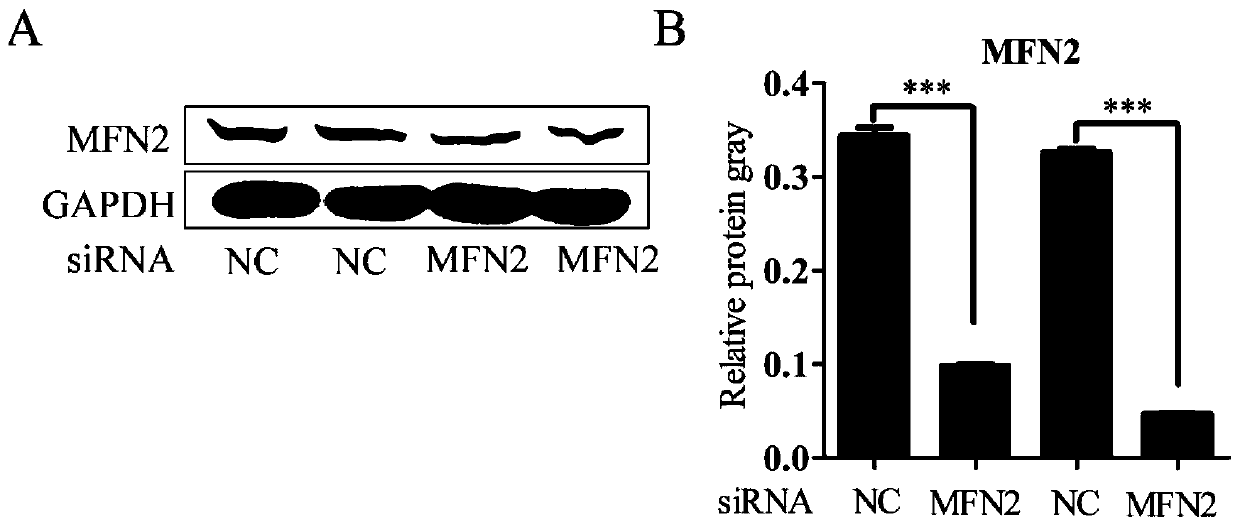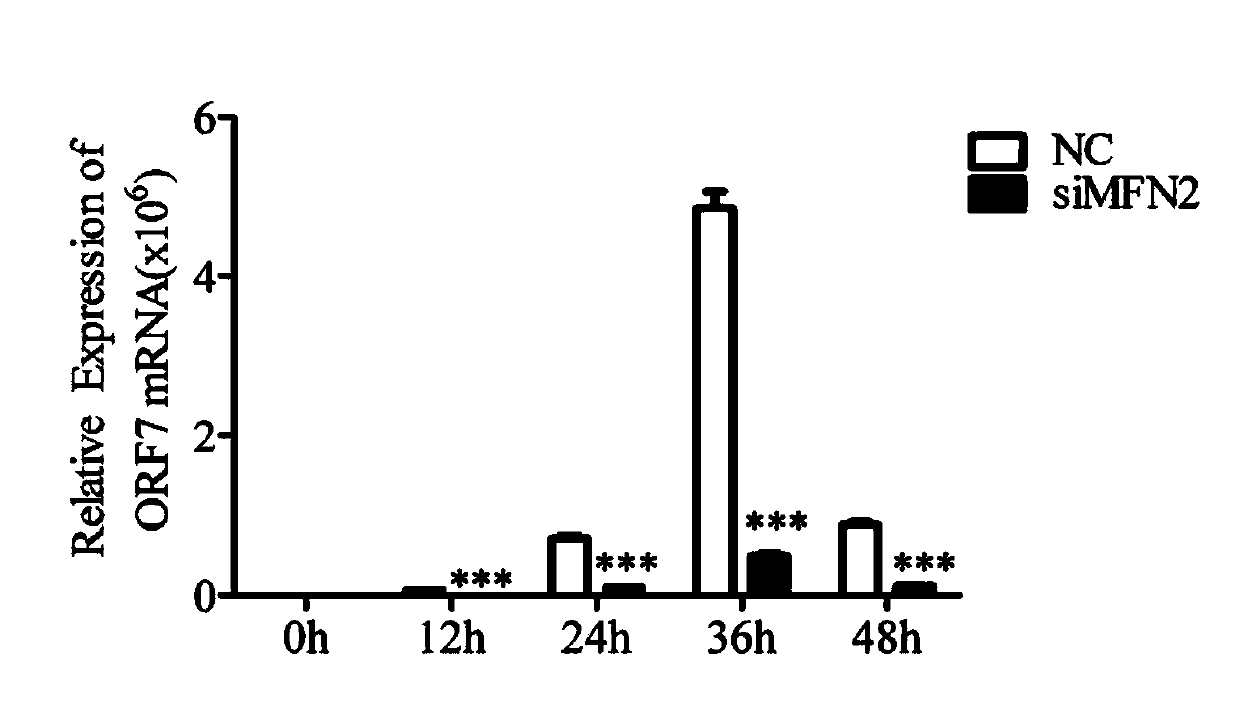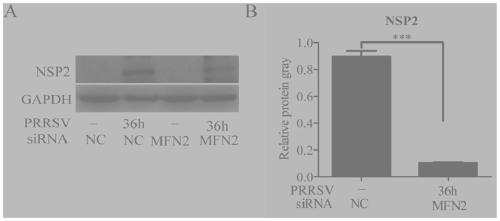Interference fragment for inhibiting porcine reproductive and respiratory syndrome viruses
A technology for respiratory syndrome and pig reproduction, applied in the field of animal genetic engineering, can solve the problems of lack of pigs, high mutation rate of viruses with complex interaction relationships, etc.
- Summary
- Abstract
- Description
- Claims
- Application Information
AI Technical Summary
Problems solved by technology
Method used
Image
Examples
Embodiment 1
[0016] Example 1: Transfection of Interfering Fragments
[0017] (1) The MFN2 protein is encoded by the MFN2 gene (see the appendix for the sequence of the gene, the sequence length is 30756bp), and the specific interference fragment is selected according to its mRNA sequence (accession number XM_007980521.1). The interference fragment sequence is provided by Suzhou Jima Company synthesis.
[0018] (2) The day before transfection, the well-grown Marc145 cells were mixed with 1×10 5 The amount of cells / well was added to a 6-well cell culture plate at 37°C in 5% CO 2 Culture in an incubator, and prepare for transfection when the cell confluency reaches 50%-60%; for specific cell transfection steps, refer to the instructions on the Lipofectamine 3000 (ThermoFisher scientific, USA) transfection kit. The brief description is, to prepare the cell transfection reagent, take two 1.5mL sterile centrifuge tubes, numbered as tube A and tube B respectively. Add 125uL serum-free medium ...
Embodiment 2
[0022] Example 2 Using qPCR to detect the inhibitory effect of interfering MFN2 on PRRSV ORF7 mRNA
[0023] (1) After transfecting the specific siRNA interference fragment for 24 hours, discard the medium and wash it twice with DMEM, add PRRSV (MOI=0.5) and mix well, incubate at 37°C for 1 hour, then add 1ml DMEM+10% FBS complete medium, continue to cultivate.
[0024] (2) Cells were collected at different time points after infection and total cellular RNA was extracted. The RNA extraction method was operated according to the operating instructions of the total RNA extraction kit (R6834-01) from Omega Company. Specific steps are as follows:
[0025] a) Add 20 μL of β-mercaptoethanol per 1 mL of TRK lysate before the extraction step. Discard the culture medium, wash twice with phosphate buffered saline (PBS), add 0.35mL TRK lysate to completely lyse the cells, and scrape the cell products on the surface of the culture dish with a cell scraper;
[0026] b) Transfer the lysat...
Embodiment 3
[0045] Embodiment 3 Utilizes Western Blot method to detect the inhibitory effect of interfering with MFN2 on PRRSV virus protein
[0046] The specific steps are:
[0047] (1) Preparation of protein samples
[0048] a) After the Marc145 cells are treated accordingly, the culture medium is aspirated and washed 1-2 times with pre-cooled PBS;
[0049] b) Add 200 μL protein lysate to each 30 mm plate (per 100 μL RIPA lysis solution, add 1 μL protease inhibitor protease inhibitor Cocktail (P8340, Sigma), phosphorylated protease inhibitor PPEi (G2007, Sigma), on ice Lyse and scrape the cells with a cell scraper;
[0050] c) Pipette the lysate into a 1.5mL centrifuge tube, and repeatedly pipette until clear;
[0051] d) Add a corresponding volume of 5×SDS-PAGE loading buffer, cook in boiling water for 10 minutes, and store at -80°C.
[0052] (2) SDS-PAGE electrophoresis
[0053] a) Gel preparation: Prepare 12% separating gel and 5% stacking gel according to the instructions of SD...
PUM
 Login to View More
Login to View More Abstract
Description
Claims
Application Information
 Login to View More
Login to View More - R&D
- Intellectual Property
- Life Sciences
- Materials
- Tech Scout
- Unparalleled Data Quality
- Higher Quality Content
- 60% Fewer Hallucinations
Browse by: Latest US Patents, China's latest patents, Technical Efficacy Thesaurus, Application Domain, Technology Topic, Popular Technical Reports.
© 2025 PatSnap. All rights reserved.Legal|Privacy policy|Modern Slavery Act Transparency Statement|Sitemap|About US| Contact US: help@patsnap.com



